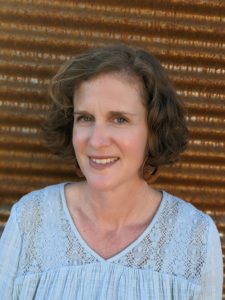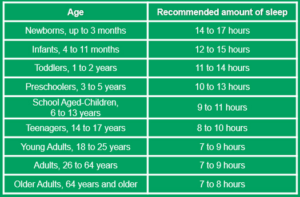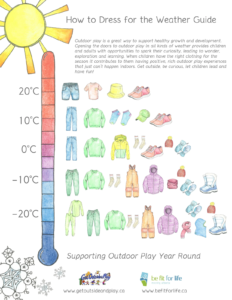
by Ursula Ramos
Many of our children have recently transitioned back to school in person and we all continue to try to stay healthy amidst the continued pandemic, there are many ways we can help our children and ourselves combat viruses of all kinds and stay healthy while riding the waves of constant change. Many of you have heard the following ideas from your children’s teachers from your first days at TWS. Over the next few weeks I would like to share ways that you can support your child to make them more resilient to stress, viruses, and in addition optimize their potential to learn. Many of these seem like common sense, but I believe with what we have all had on our plates this year, it is easy to forget some of the basics. As a teacher, I shared many of these ideas as core concepts parents could incorporate at home. Parents who adopted these practices sent me children who were engaged, calm, resilient, and overall quite healthy. Most of these ideas not only have merit in Western medicine but are steeped in anthroposophical medicine as well. I have also employed these tenets as a mother of three. Let’s empower ourselves and our children as we continue our parenting journey in 2020!
Sleep
Sleep has many benefits; not only does it help our children digest their ever changing world and school days, it is also essential to immune functioning. Your body needs sleep to fight infections and prevent inflammation. Both cytokeine proteins and antibodies are released while we sleep. Studies show that when you are exposed to viruses, you are less able to combat them if you are sleep deprived. In addition, sleep deprivation can lengthen illnesses. Good sleep hygiene is something we can all do to help our children build healthy immune systems.

Of course getting your child to bed is often easier said than done! Children, unlike adults, often exhibit signs of hyperactivity when they are tired or overtired, where adults are more likely to slow down. Finding a good sleep window before your child winds up is key. According to anthroposophic physician Susan Johnson, our liver is directly connected to our ability to have a good night’s sleep and our liver likes to follow the cycle of the sun. When we don’t follow this cycle, we affect the liver’s metabolism and in doing so completely throw off its natural inclination to begin shutting down metabolism for the night around 6 pm. This leads to a burst of sugar in our blood stream that our bodies have to borrow from the next day. The following day our bodies need to release stress hormones from our adrenal glands to manage the lack of glycogen for that day. Thus the “second wind.” Johnson states, “These hormones act to provide more sugar in the blood, but they also accelerate our heart rate, increase our blood pressure, and suppress our immunity (we get colds more easily).
It is helpful to think of your child’s bedtime routine actually beginning at dinner time. Meaning having dinner at the same time each night, leaving enough time to clean up, take a bath, have quiet family time, stories, and songs is essential. With older children this might include them helping with dinner clean up, getting their backpacks ready and clothes out for the next day followed by reading quietly before lights out. Every family has to experiment with their own sleep routine but it will go a long way to ensuring your child is ready for their school day in the morning.
We also know that light can deter an easy transition into sleep. Making sure screens are off after afternoon Zoom will encourage better sleep. Remembering to lower the lights just before or after dinner will do this as well. You can experiment with having candle lit dinners, eating outside with candles or low light, and even carrying a candle into your child’s unlit room as a way to signal the time for sleep. Many children brought home lanterns in the past week, others of us have a collection from years passed. How lovely to use them for a dark, lantern lit walk in the evenings to set a quiet mood of bedtime.
In addition to the health benefits of sleep, a good night’s sleep helps children meet their day ready to learn. Rudolph Steiner knew, well before research proved, that sleep is the time humans process what they learned the day before in order to retain it in their memories. Sleep is an integral part of learning. Studies have shown that you don’t get the full benefit of the day’s lessons without sleep. Additionally science confirms that sleep has deep impacts on many parts of children’s lives. It affects behavior, focus, ability to stay on task, mood, decision making and impulsivity. It is clear that sleep affects children’s ability to learn. In addition, sleep affects our children’s ability to have good relationships with teachers and peers. This important relationship between student and teacher as well as class relationships are not only part of what children are learning but also affects how easily they take in information from their teachers.
Warmth
Warmth is one of the twelve senses Steiner described our children developing in their second 7 years of life, from 7-14. In Waldorf education we speak both of the physical and emotional sense of warmth. The first way we as parents can provide physical warmth is by ensuring children wear proper clothing to keep them warm in these new outdoor spaces. If children are not using their bodily resources to warm their bodies because they are not dressed warmly enough, they can then use those resources to build their immune systems, as well as grow physically and cognitively. Warmth will allow children to focus on their teachers and the lessons at hand.
Thankfully, in Tucson outdoor classrooms will be comfortable for most of the year without the extreme protective gear that our fellow Waldorf schools in the North will need. However, we do experience some very chilly mornings. As a teacher, rarely a cold day would go by that I did not dig into my collection of clothes to provide extra layers for the young children in my care. Anthroposophic doctor, Adam Blanning, says that children need one more layer of clothing than adults in every season. This is the case because most children do not notice that they are cold until they are quite chilled, and then it is much more difficult to get them warm again. In a recent article in the New York Times, former Iditarod ultramarathon winner encourages parents to cover “hands, head, heart and feet.” but claims that, “feet are probably the most important.” This means warm socks and shoes that cover the child’s entire foot. Anthroposophic doctors would encourage a warm base layer on the torso as well. Layers, and more than you think you need, are the way to go. Insulated waterproof shoes will be important this year to keep toes warm. Long underwear is also helpful for the chilliest mornings and the leanest children. There are many synthetic versions but even better are the wool or silk as they not only wick away moisture and feel good but in anthroposophic medicine are believed to hold and strengthen one’s etheric (life force).
Another tip is “minding the gaps.” This is not the time to let your middle schooler embrace the crop top sweaters that are so popular, unless they also enjoy a long jacket. Put away the too small clothes your little one doesn’t want to part with so their waists, ankles and wrists are covered on chilly mornings. With layers it is easy to maintain the proper temperature throughout the day.

In addition to warmth’s ability to keep our children well and able to receive information, warmth can have emotional impacts as well. Steiner spoke of a person’s outer warmth being able to encourage an inner or emotional warmth as well. Even the words we use to describe a person’s personality or behavior are related to warmth. “He was cold to me.” “She has a warm disposition.” Studies have shown that outer warmth, as Adam Blanning puts it, “supports comfort and connection with ourselves, as well as empathy and kindness towards others.” When looking around at the current state of the world, who couldn’t use more of that! He points to studies of college students who judged a target person as having a more generous and caring personality if the students were making this judgement while holding a warm versus iced coffee. In other studies participants holding a hot pad were more likely to choose a gift for a friend instead of themselves.
There are other practical ways we can incorporate more warmth in our children’s days. In cultures around the world this time of year is marked by festivals of light. Many of us marked Martinmas recently as the first festival of light we will celebrate. Candles also bring an emotional mood of warmth. Candles on the table, reading by candlelight or taking candlelit walks will not only encourage good sleep but bring a feeling of warmth to your child as they end their day. Another way to encourage warmth is to give your child warm foods, especially before school. A warm mug of tea for breakfast (or in a travel cup for the car ride), a warm breakfast, and a thermos packed with a warm snack can give your child the extra bit of warmth to start or buoy their day.
Warmth encourages our children’s ability to learn as well. Blanning says,
There is physical warmth, emotional warmth of love, of generosity, of true morality-all of these ‘warmths’ pour over and merge with each other. Perhaps most importantly, warmth is the essential ingredient in transformative work. Without warmth, we cannot change, and the life of the small child is consumed with processes of growth and adaptation. Warmth helps us be healthy human beings on many different levels. Waldorf education understands that a child is indeed actively striving to integrate: to learn to feel comfortable in her body, to find the means for expressing outwardly what she feels inwardly, to develop a sense of security and understanding about all the new and unusual experiences brought by the world around her. To bring what is in, out; to make what is foreign one’s own. Warmth helps that process.
On some level this is what brought most of us to Waldorf education. We wanted our children and ourselves to be part of this warm, transformative education. Our teachers and facilities staff have already provided emotional warmth by creating welcoming outdoor classrooms. Our teachers have provided our children with the loving attention with which they have welcomed the children back and put into their daily lessons. Let’s help provide physical, and therefore, emotional warmth for our children by sending them to school lovingly clothed for their day. Some children may balk at the suggestion of wearing extra clothes, especially after such a long, hot summer. Knowing that this is a loving, protective gesture you are providing for them sets a tone that is much more easily accepted by the children and one that is easier to stand by as parents.

